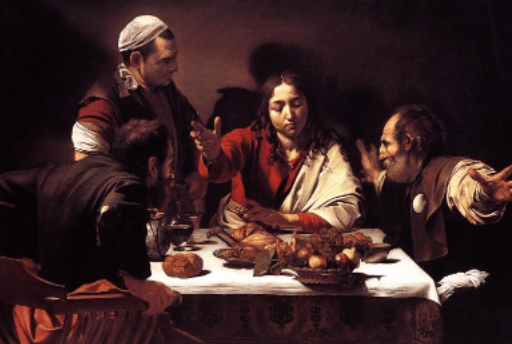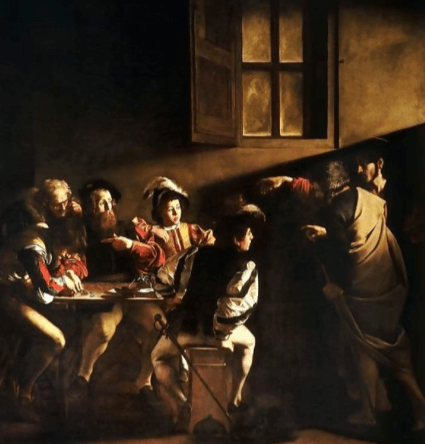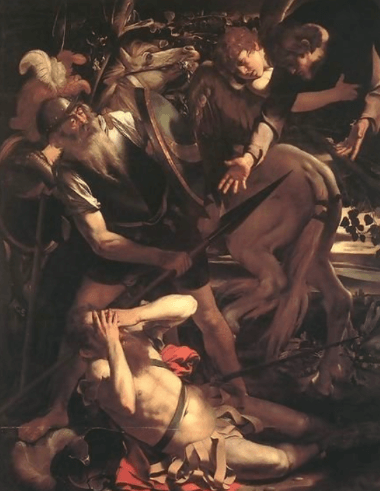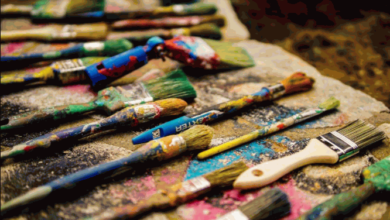Style of Caravaggio’s Paintings

Art styles describe the appearance of the artwork. The artist’s style is essentially how they portray their subject matter and display their vision. The features that identify the artwork, such as the artist’s use of form, color, and composition, to mention a few, determine the style. Read the article further to know more about what went behind Caravaggio’s art.
Caravaggio, or Michelangelo Merisi da Caravaggio, was an Italian painter who spent most of his professional life in Rome. Until the last minute, he spent the last four years of his life moving between Naples, Malta, and Sicily. This had a formative impact on Baroque painting.
Following the progression of Caravaggio’s paintings is almost like a visual chronicle of his life. His art, just like his life, starts from his simple, humble beginnings in genre scenes, still-lifes, and using himself or his roommate as a model, to his rapid climb to prominence about 1600 and his large-scale, gorgeous commissions, to the darkest of paintings during his final years as a homicidal fugitive.
Caravaggio’s Outstanding Features
The artist’s realism, strong chiaroscuro, and stress on co-extensive space distinguish Caravaggio’s painting style. His work is characterized by his preference for a linen canvas support mounted on a wooden strainer, a rich red-brown ground that is frequently left visible, the use of mid-tones, working with the direct observation of life, and the use of dramatic, single-source lighting.
To define the composition and fix the attitude of his figures, he makes freehand incisions in the still moist ground. “I didn’t use any preliminary studies. Instead, I started by loosely painting the shape of forms in black paint and pinpointing the main highlights in lead white (abozzo), Ground in walnut oil with a restricted spectrum of earth colors.”

Caravaggio – The Calling of Saint Matthew
Chiaroscuro Technique
Chiaroscuro is a derivation from the Italian terms Chiaro (which means “clear” or “bright”) and oscuro (which means “obscure” or “dark”). To generate photorealistic depth and tone, the approach focuses on shadows and a single light source. Early Baroque-era artists demonstrated how striking the chiaroscuro technique could be, which is why so many artists today continue to utilize it, despite how difficult and time-consuming it is to produce.
However, artists of the Baroque period developed the chiaroscuro technique by employing intense lighting to produce drama and intensity and oil paint to blend and build up progressive tones of color. Michelangelo Merisi da Caravaggio, a 17th-century Italian painter, is perhaps the most well-known chiaroscuro artist. He frequently blacked out substantial areas of Caravaggio famous paintings backgrounds and strongly highlighted the focal subjects.
Caravaggio’s chiaroscuro is what distinguishes him. His figurines are lit by a single source and against a dark background. This results in the stark contrast between light and dark. Highlights appear brighter, and shadows appear darker. Subjects are lit in the same way that actors on a stage are. The dramatic situations frequently extend beyond the image frame. Arms extend out to the spectator, or bowls of fruit sit on a table, about to fall off, urging the viewer to push them forward.

Caravaggio – The Conversion of St. Paul
Tenebrism
The term “tenebrism” indicates a painting style characterized by deep shadows and dramatic contrast between light and dark parts in fine art (from the Italian word “tenebroso,” meaning dark). It is, in essence, a compositional approach (sometimes mistaken with chiaroscuro) in which some portions of the painting are maintained entirely black, allowing one or more regions to be brilliantly lighted – usually from a single source of light. These works are sometimes referred to as “night pictures” or “dark paintings.”
He used detailed physical observation in conjunction with a dramatic use of chiaroscuro, a technique that became known as tenebrism. Caravaggio elevated the technique to a dominating aesthetic feature, engulfing subjects in dazzling shafts of light and darker shadows. He depicted pivotal moments and incidents, frequently including violent conflicts, torture, and death. He worked quickly with live subjects, preceding sketches and working directly into the canvas. His influence on the emerging Baroque style that arose from Mannerism was tremendous.
According to art historians, the Italian painter Caravaggio invented the painting method. He pioneered the chiaroscuro style, which contrasts light and dark, working from Rome in the late sixteenth and early seventeenth centuries. He contributed to the development of tenebrism as we know it now by employing similar tactics for dramatic illumination. However, tenebrism peaked during the Baroque period and did not last into other periods of art history. On the other hand, the related chiaroscuro technique remained popular in a variety of genres ranging from neoclassicism to romanticism. And it is visible in some of Caravaggio famous paintings.
No Drawings
Before painting, most artists made rough preliminary drawings on canvas to ensure proper arrangement and proportions. X-rays, however, have proven that Caravaggio did not do so. Instead of preparatory drawings, the artist would use the handle of his brush to trace rough indications in the first layers of paint and then proceed with the rest of his painting.
According to sources, Caravaggio did not draw but instead painted directly in color from life, as evidenced by the frequent pentimenti confirmed by X-ray research. The compositional system’s cardinal points were summarily set using freehand cuts immediately on the preparation. In the image, these incisions coincide with the bust of the primary female character, identifying a section of the right shoulder and the chin line.
Caravaggio insisted on painting straight from life, using a method that involved drawing his subject quickly but carefully in brush and dark paint, creating the critical highlights with dashes of white lead, and incising the composition’s main contours into the still wet ground before applying the colors.
Conclusion
Caravaggio’s profoundly moving images were created using an incredibly efficient and progressively effective method tailored to the constraints of live model execution and later to the necessity of quick implementation. The high quality of artistry and materials utilized have resulted in highly durable famous paintings. Understanding of the materials, as well as experience with their handling and application, can significantly help the enjoyment of his work.





